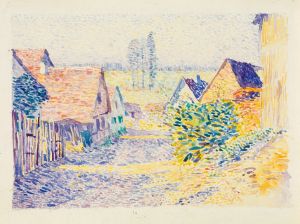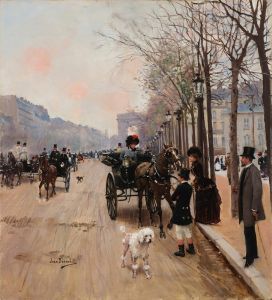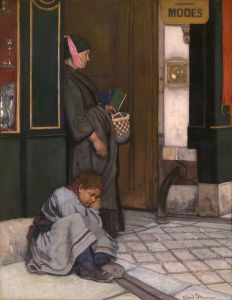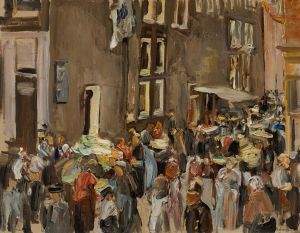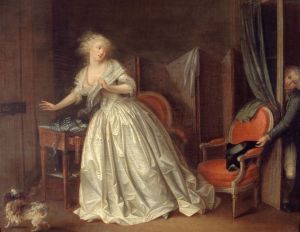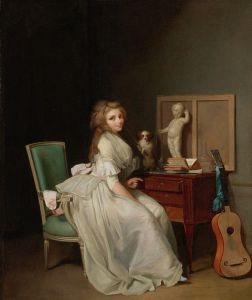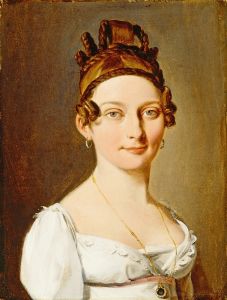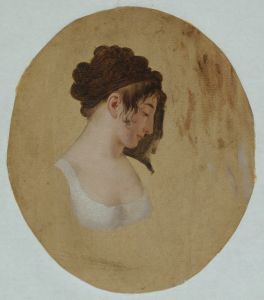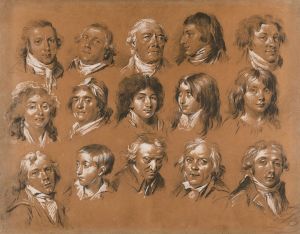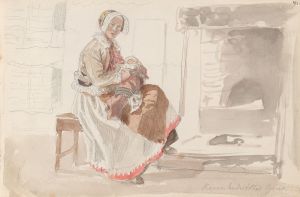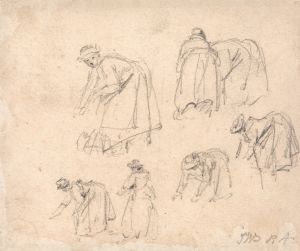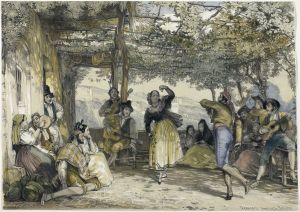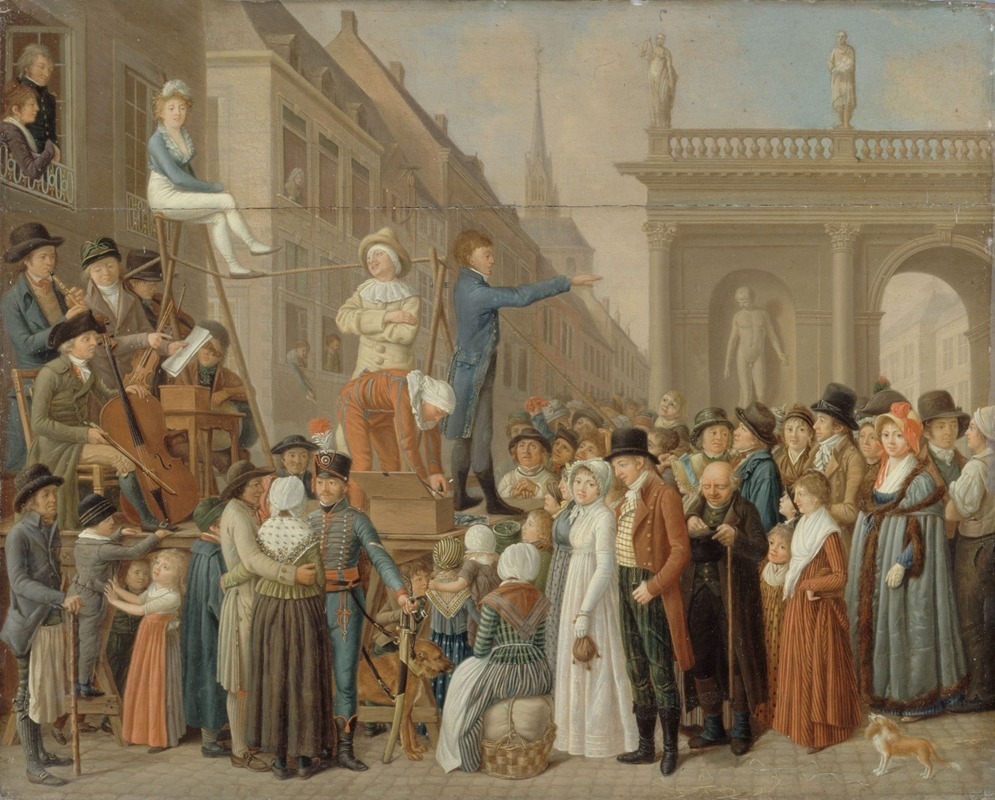
L’Estrade
A hand-painted replica of Louis Léopold Boilly’s masterpiece L’Estrade, meticulously crafted by professional artists to capture the true essence of the original. Each piece is created with museum-quality canvas and rare mineral pigments, carefully painted by experienced artists with delicate brushstrokes and rich, layered colors to perfectly recreate the texture of the original artwork. Unlike machine-printed reproductions, this hand-painted version brings the painting to life, infused with the artist’s emotions and skill in every stroke. Whether for personal collection or home decoration, it instantly elevates the artistic atmosphere of any space.
L’Estrade is a painting by the French artist Louis Léopold Boilly, who was known for his detailed and often humorous depictions of Parisian life during the late 18th and early 19th centuries. Boilly was born on July 5, 1761, in La Bassée, France, and he became one of the most prolific and celebrated painters of his time. His works provide a vivid glimpse into the social and cultural milieu of his era.
L’Estrade, which translates to "The Platform" in English, is one of Boilly's genre paintings, a category in which he excelled. The painting captures a lively scene with a group of people gathered around a platform, possibly for a public speech, performance, or some form of entertainment. Boilly's keen eye for detail and his ability to capture the nuances of human expression and interaction are evident in this work.
The composition of L’Estrade is carefully arranged to draw the viewer's eye towards the central figures on the platform while also allowing the surrounding crowd to contribute to the overall narrative. Boilly's use of light and shadow enhances the three-dimensionality of the scene, giving it a sense of depth and realism. The clothing and accessories of the figures are rendered with meticulous attention to detail, reflecting the fashions of the time.
Boilly's paintings often included subtle social commentary, and L’Estrade is no exception. The expressions and postures of the figures suggest a range of reactions to the event taking place on the platform, from rapt attention to casual indifference. This diversity of responses adds a layer of complexity to the painting, inviting viewers to consider the different perspectives and experiences of the individuals depicted.
Throughout his career, Boilly was known for his ability to capture the essence of Parisian life, and L’Estrade is a prime example of this talent. His works are characterized by their lively compositions, rich detail, and insightful observations of human behavior. Boilly's paintings provide valuable historical documentation of the social dynamics and cultural practices of his time.
L’Estrade is housed in a private collection, and as such, it is not as widely known or accessible as some of Boilly's other works. However, it remains an important piece within his oeuvre, showcasing his skill as a genre painter and his ability to convey the vibrancy of everyday life.
Louis Léopold Boilly continued to paint and exhibit his works until his death on January 4, 1845. His legacy endures through his extensive body of work, which continues to be studied and appreciated for its artistic and historical significance. L’Estrade, like many of Boilly's paintings, offers a window into the past, capturing a moment in time with both precision and artistry.





